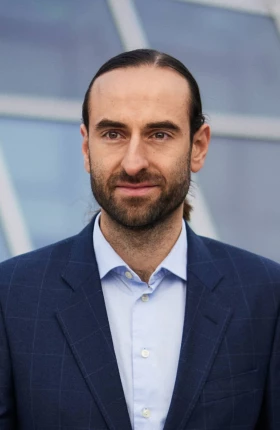The Baltic Sea is in critical condition, with several environmental challenges threatening its future. First, wastewater and agricultural runoff from fertilized fields is leading to eutrophication, a process that decreases the oxygen critical to marine life and causes severe algal blooms. Second, hazardous substances such as flame retardants, dioxins, and pharmaceuticals are resulting in contamination of the waters and driving up toxin levels in the fish that are hauled in. Third, overfishing has depleted important commercial fish stocks such as cod, herring, and sprat despite some recent progress in addressing the issue. The strong projected growth of the region will only place more demands on the sea’s limited resources unless actions are taken to address these problems and restore the waters to health. At the same time, however, the Baltic Sea region—which includes the countries of Finland, Sweden, Denmark, Germany, Poland, Lithuania, Latvia, Estonia, and Russia—is particularly well positioned to take on a global leadership role in responding to these types of environmental challenges. Politically stable and not plagued by poverty, war, or other major conflicts, this dynamic region is also financially strong and boasts well-educated people, a relatively low population density, a solid commercial base, and a reputation for innovation. Given these characteristics, it has the potential to become a hub for innovation in the so-called blue and green technology solutions that have a positive impact on the environment, including both the sea and the land.
Capitalizing on the Opportunity
The Boston Consulting Group recently joined forces with WWF to evaluate how best to conserve and restore the health of the Baltic Sea. In the resulting report Turning Adversity into Opportunity: A Business Plan for the Baltic Sea , BCG analyzed the likely impact that two different scenarios for the future would have on the region’s three key industries: tourism, agriculture, and commercial fishing. The two scenarios assessed were “Clear Waters,” a cleaner and functioning Baltic Sea, and “Shipwrecked” a further accelerated degradation. Drawing on our analysis, we determined that by 2030, under the Clear Water scenario, the region could add 550,000 more jobs and €32 billion in economic value than it would achieve in the Shipwrecked scenario—by decreasing the region’s ecological footprint and promoting collaboration among the Baltic countries’ governments and industry sectors.
An additional opportunity exists in that the blue and green solutions needed to help the region address its environmental threats are the subject of rising global demand, making the commercial benefits of developing these solutions potentially enormous. Wastewater treatment, for instance, is an area of major potential growth both in the region—and beyond. In the Baltic region, the demand for improved wastewater treatment is strong since countries there still release on average 22 percent of their wastewater, untreated, into the sea. Similarly, China plans to invest €43 billion over the next five years to improve its urban wastewater infrastructure.
Other commercial opportunities related to the three challenges of eutrophication, contamination, overfishing range from developing entirely new products and services to providing existing ones more efficiently or sharing best practices among countries. (See the exhibit.) For instance, one way to reduce water pollution from agricultural runoff would be to tailor the distribution of nutrients to individual crops. Besides reducing the flow of excess nutrients into the water, this approach would reduce input costs and increase yields. Another innovative approach would be to produce biogas from the algae growth caused by eutrophication of the sea. Additional areas that hold promise include systems that would minimize the use of toxins and improve safe handling of them.
Recommendations for Moving Forward
Although some progress has been made, the environmental decline of the Baltic Sea continues. The health of the region relies on a complex governance arrangement that involves the national governments of all nine coastal countries, local and national laws, regional conventions, and directives and legislation by the European Union. The Helsinki Commission (Helcom) works to protect the Baltic Sea environment by encouraging cooperation among the governments of the Baltic nations and the European community, but Helcom has no binding authority, and any agreements are left to the individual countries to implement. Moreover, implementation of the agreed-upon actions to halt the degradation of the Baltic Sea under the Helcom “Baltic Sea Action Plan” are currently behind schedule. Drawing on our analysis, BCG has identified five recommendations that—taken together—could turn the tide and generate improved, sustainable health for the Baltic Sea:
Focus on high-impact initiatives. To avoid diluting efforts and investments, create a clearly prioritized agenda that focuses on the initiatives that address the key problems of eutrophication, contamination, and overfishing. To tackle eutrophication, minimize nutrient leakages, provide incentives for reducing fertilizer use, and improve wastewater treatment. To address contamination, ban toxic substances and support the development of harmless substitutes. To reduce overfishing and install long-term management plans for all major fish species, set a target of zero for unwanted catches and discarded fish, and limit subsidies to the fishing industry.
Empower regional bodies and increase accountability. Without authority and accountability, meaningful progress is unlikely. Find ways to empower Helcom and other regional bodies to enforce action, independently track progress, and optimize regionwide investments—and hold national stakeholders accountable for implementing the actions that they’ve already agreed to. Civil society and the public and private sectors must work in partnership to hold national authorities more accountable by increasing public pressure to act and to honor their commitments.
Take an integrated, coordinated approach. Defining sustainable solutions for the region requires a broad, cross-industry approach and must also involve prime ministers as well as the national ministries of finance, enterprise, and labor. Devise ways for legislators, environmental scientists, and corporate representatives to collaborate closely at the early stages of policy development. Any proposed solutions must consider not only the environmental impact but also the social and economic aspects as well.
Drive innovation with commercial incentives. Combining legal frameworks with reward and sanction systems can encourage the development of solutions and minimize behaviors that hurt the Baltic Sea. For instance, industries, scientists, and universities should receive incentives and support designed to encourage their collaboration and the creation of new ways of approaching the problems of eutrophication, contamination, and overfishing. At the same time, unnecessary government-imposed costs and hurdles for entrepreneurs should be removed since they might curtail technology development and innovation that can be shown to benefit the Baltic Sea. Also, environmental costs should be linked more closely to their source—for instance, by consistently introducing a tax on artificial fertilizers.
Transform the region into a hub for blue and green technology. Strategic investments can raise the rate of innovation and commercialization of ideas. Create vibrant markets by combining national governments’ strong commitment and funding with the cutting-edge research and commercial activities of multinational companies and innovative start-ups alike. Explore public-private partnerships to leverage resources and share risks, and use public procurement to stimulate innovation by including the impact on the Baltic Sea as a parameter for vendor qualification. Capture knowledge from other regions—such as Singapore (see the next section, “Learning Lessons from Singapore”)—that have successfully overcome environmental problems and developed world-class solutions.
Singapore’s transformation from a water-rationing nation to a commercially viable hydrohub is an example of how environmental challenges can be turned into opportunities. In the 1960s, water shortages, polluted rivers, and poor sanitary conditions were key public-health concerns in Singapore. Today, not only does the country provide sustainable supplies of clean water to its people, but it also has turned its technology-based environmental solutions into profitable businesses—and even exports its expertise. Since 2006, about 50 new companies have been formed in Singapore, 6,000 jobs have been created, and the number of research centers has increased from 3 to 25. A driving factor behind Singapore’s success is the strong and ongoing cooperation between its public and private sectors. To promote the development of leading-edge technologies, the government strategically invests in research and actively supports the innovation efforts of industry.
The Baltic Sea region has similar potential to become a global leader in technology-driven environmental solutions. By reframing its challenges as economic—rather than environmental—the region can clearly show the negative impact of polluted waters on tourism, commercial fishing, and other industries—and the positive benefits of a clean water scenario.
As Singapore learned, success requires a shared vision of the future, along with government commitment, broad-based coordinated efforts, and ongoing collaboration between the public and private sectors.







